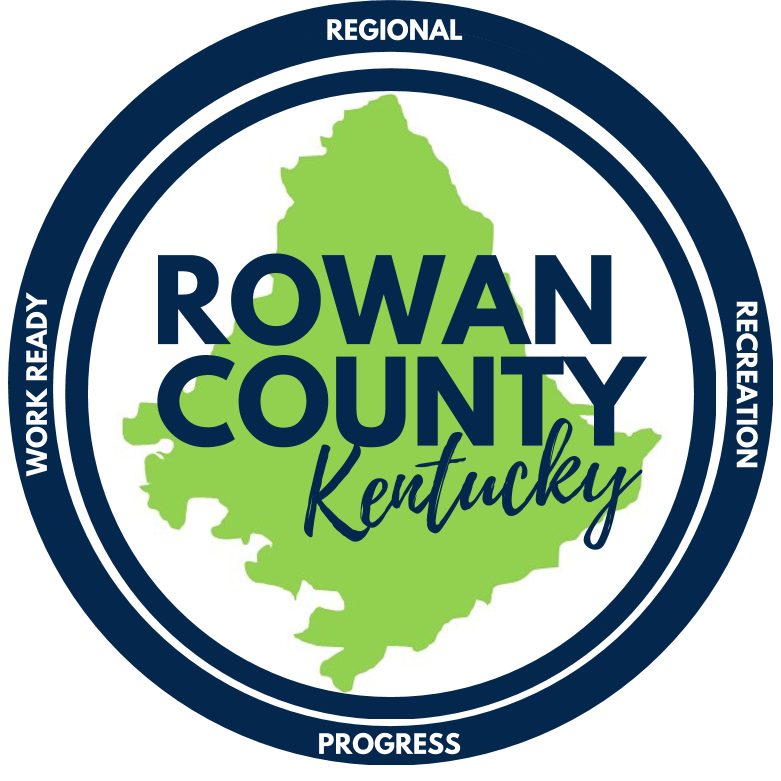Rowan County War
Article by Savannah Jackson
Only decades after Rowan County’s foundation in 1856, a conflict began known today as the Rowan County War.
The Rowan County War (1884-87) has its roots in the Martin-Tolliver feud, which can be further traced back to the Underwood-Holbrook feud (1877-79). The conflict took 20 lives, including all the males in the family who had the surname Underwood. John Martin was a lesser member of the Underwood side because he rented land from them. As a Republican serving as a clerk for the county, John Martin started a political rivalry with Democrat Floyd Tolliver, who had also supported the Underwoods. However, allegations of falsifying records cost him the election in 1878.
On August 4, 1884, an election day, John Martin joined in a political argument at the polls and eventually drew his pistol, causing others to do the same. As part of the response to restore peace, Floyd Tolliver arrived, bringing with him the Sheriff John C. Day. They were welcomed with a shower of rocks from both sides of the argument, and at some point, someone shot a pistol, and a gun battle ensued. An individual named Solomon Bradley, believed to be a friend of Martin’s, was killed, and since no one knew who made the first shot, both John Martin and Floyd Tolliver were indicted for manslaughter.
Just before the matter was to be settled in court in December 1884, the two saw each other while drinking out in Winchester, and Martin fired his pistol, killing Tolliver. Tolliver’s last words, addressed to his friends, were: “Remember what you swore to do; you said you would kill him; Keep your word.”
Tolliver’s supporters forged a request from the court to transfer Martin back to Morehead and shot him after boarding the train. He died the next day. Quickly, most Democrat families sided with Tolliver, and most Republican families sided with Martin. The town Marshall election was held soon after, and Craig Tolliver, a relative of Floyd’s, assumed control of Morehead. He was opposed by Martin’s father, Dr. Ben Martin, who was supported by Rowan County Sheriff, Republican Cook Humphrey.
It is believed that by 1885, nine out of every ten men in Rowan County had taken a side in the conflict. Feud violence continued, and three times the state militia was called to quell the violence, including the noted Louisville Legion. At one point, a state report by General Sam Hill recommended to the governor of Kentucky that Rowan County be dissolved due to the violence.
The war concluded in the summer of 1887 when a faction led by Hiram and Logan Pigman surrounded and shot Craig Tolliver. Three others died in a final shootout involving sixty men for two hours. After a legislative investigation by the Kentucky State Assembly concluded, the townsfolk were mortified of their reputation throughout the state. They acted by creating the Morehead Normal School in 1887. Thirty-five years later in 1922, the Kentucky General Assembly replaced it with the establishment of Morehead State University.
Two years after the War’s conclusion, a reconciliation between the Martin and Tolliver families occurred with the marriage of Grace Martin (daughter of Gils Martin) and Frank Tolliver (brother of Craig Tolliver). Reportedly, the entirety of both families, dubbed “the Capulets and Montagues” by the press, were in attendance. After news of their matrimony became spread far and wide, the New York Times wrote: “Little Cupid has accomplished what the state of Kentucky exhausted its Executive, Legislative, and Judicial machinery to compass.”
Sources:
“The Rowan County War.” Anamericanfamilyhistory.com, 2019, www.anamericanfamilyhistory.com/Oxley%20Family/The%20Rowan%20County%20War.html. Accessed 31 Aug. 2022.
Bloomington Weekly Pantagraph, "A Reign of Lawlessness: A Whole Kentucky County Murderously Mad Over an Election Wrangle --- Serious Results" (1885). Rowan County War Collection. 266.
https://scholarworks.moreheadstate.edu/rowan_county_war/266
Hickman Courier, "The Dogs of War: The Rowan County War Breaks Out Afresh" (1885). Rowan County War Collection. 177.
https://scholarworks.moreheadstate.edu/rowan_county_war/177
Maysville Daily Evening Bulletin, "A Train Stopped and a Murderer Riddled with Bullets" (1884). Rowan County War Collection. 518.
https://scholarworks.moreheadstate.edu/rowan_county_war/518
Louisville Courier-Journal, "Rowan County: A Three-Years' History Written In the Blood of Seventeen Murdered People." (1887). Rowan County War Collection. 389.
https://scholarworks.moreheadstate.edu/rowan_county_war/389
Maysville Daily Evening Bulletin, "Deadly Feud Ended in Marriage" (1889). Rowan County War Collection. 68.
https://scholarworks.moreheadstate.edu/rowan_county_war/68
Blair, Juanita and Brown, Fred Jr., "Days of Anger, Days of Tears: Rowan County, Kentucky, 1884-1887 - First Edition" (1984). Rowan County War Collection. 275. https://scholarworks.moreheadstate.edu/rowan_county_war/275
“The Rowan County War: Two Factions Thirsting for Each Other’s Blood.” The New York Times. 6 July 1885. https://timesmachine.nytimes.com/timesmachine/1885/07/06/103062018.pdf
“War Ended by Marriage.” The New York Times. 20 October 1889. https://timesmachine.nytimes.com/timesmachine/1889/10/20/100976123.pdf
“Morehead State University :: History of MSU.” Moreheadstate.edu, 2017, www.moreheadstate.edu/about/history. Accessed 31 Aug. 2022.

